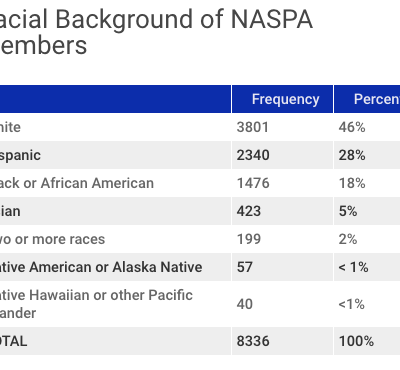What Happens Next? Pursuing Racial and Ethnic Diversity with Race-Neutral Admissions
Title: Race, Elite College Admissions, and the Courts: The Pursuit of Racial Equality in Education Retreats to K-12 Schools
Authors: Anthony P. Carnevale, Peter Schmidt, and Jeff Strohl
Source: Georgetown University McCourt School of Public Policy Center on Education and the Workforce
The implications of disallowing the consideration of race in college admissions are significant. In anticipation of the Supreme Court’s decisions in two race in admissions cases, Georgetown University’s Center on Education and the Workforce simulated six admissions models using four criteria: academic merit, high school class rank, socioeconomic status, and race/ethnicity. Four of the models considered race, while the other two did not. Other criteria, such as first-generation status, are being considered as race-neutral pathways to promoting diversity.
The authors acknowledge the models used in the simulations are unlikely to occur but demonstrate the malleability and potential of varying admissions practices. None of the models, even those that considered race, admitted a proportion of minority students commensurate with that of high school graduates.
Key findings from the report include:
- Most race-neutral admissions practices do not promote and preserve diversity at the same level as race-conscious admissions. In states where the consideration of race in admissions has already been banned, all public flagship universities faced decreases in underrepresented minority enrollment, at a time when the proportion of minority high school graduates is rising.
- The simulations indicate that utilizing academic merit and socioeconomic status could result in increased representation for minority groups. However, there are caveats. Underrepresented minority and low-income students are less likely to apply for selective colleges. For race-neutral admissions to produce more diverse classes, selective colleges will need to greatly expand the applicant pool. Given these stipulations, the simulation predicts that the proportion of Hispanic/Latino enrollment would increase from 14.1 to 18.5 percent, Black/African American enrollment would increase from 5.9 to 6.6 percent, and white enrollment would decline from 57.1 to 51.9 percent.
- Preferential admission for legacy applicants, athletes, and students from wealthy backgrounds pose a threat to minority representation, as these advantages more often favor white students.
- Comprehensively addressing wealth and education disparities requires K-12 schools to reform their approach to college preparation and counseling. Primary and secondary education are central to students’ college readiness. To utilize higher education for socioeconomic mobility, educational standards should be equity-oriented as opposed to a focus on adequacy standards.
- Rectifying the ramifications of the recent Supreme Court ruling in Students for Fair Admissions (SFFA) v. Harvard and SFFA v. University of Carolina-Chapel Hill will require intentional, thoughtful modification to admissions models, especially at selective colleges.
To read the report in full, click here.
—Erica Swirsky
If you have any questions or comments about this blog post, please contact us.


